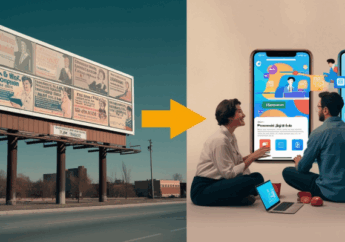9 Common Problems With Running Shoes For Women And How To Fix Them
by Arnab Dey Our Blogs 12 May 2022

Running shoes are designed to be as comfortable as possible, but it’s not uncommon for women to find that running shoes aren’t quite as accommodating as they would like them to be. Many find themselves suffering from one or more of the following common problems with running shoes for women and how to fix them.
Wearing The Wrong Shoe Size
Wearing running shoes that are too small can cause foot, knee, or hip pain. Running in uncomfortable running shoes is like driving a car that doesn’t fit you—it makes it very difficult to get a good grip on your pedals, which can make your run uncomfortable. By purchasing running shoes in person at a specialty store (not online), you can make sure they fit correctly before taking them home.
If your new runners still feel off after wearing them for a few days, consider switching brands/styles or returning them altogether. Just as no two bodies are built exactly alike, not all shoe brands work perfectly with every foot type—something that’s hard to know until you try on different options!
The Blisters Factor
Part of getting a quality pair of running shoes for women is ensuring that you get your size. Even if you love a brand’s fit in another style, chances are good that it will run too small or too large.
Before ordering online, visit a local running shoe store so they can evaluate your foot and match it up with a shoe that suits your running needs. Also, consider a pair of socks made specifically for running—they’ll help keep blisters at bay.
Shoelaces Are Too Long
Shoe companies are in business to sell their products, so they make every effort to have you buy new pairs of running shoes. To make it easy on you, most running shoe manufacturers include a single lace of appropriate length with each pair of running shoes. Unfortunately, that lace might be longer than you need or too short for your purpose.
You can easily remedy both situations by buying a replacement lace at your local shoe store or department store. You should replace running shoelaces before every run and at least once per week; if your laces wear out sooner than that, it’s a sign that they’re not up to snuff.
Side Zip Breakage
One common problem we’ve found is that running shoes for women are usually laced in a certain way to make them more comfortable, but that also increases tension on one side of the shoe. This can cause breakage at one side of your running shoe, especially if you don’t replace your old running shoes as often as you should.
It’s recommended that you replace running shoes every six months, regardless of wear. Breaking in new sneakers slowly will help reduce some of these problems. Replace your running shoes every 500 miles when worn regularly to prevent stress fractures caused by fatigue.
Back Heel Pain
Running Shoes For Women can cause back heel pain, fairly common among runners. When selecting a pair of running shoes, it’s important to consider what your feet are doing when you run. When your foot hits the ground, it should be doing two things: pushing off (to propel yourself forward) and rolling from heel to toe (to absorb shock).
If you have little arch support in your running shoe, then as you hit the ground your feet aren’t absorbing as much shock because they’re not rolling properly. A lack of support in running shoes for women will make back heel pain worse or develop if it hasn’t already. By investing in a good pair of running shoes that provide adequate arch support, that problem can be solved!
Shoes Ride Up Your Leg
This could mean you’re wearing shoes that are too big. Make sure you wear socks that won’t bunch up at your ankles, like calf-length athletic socks, as well as pants with a slim fit. There also may be extra material in the heel or sole of your shoe that tends to ride up; these can be trimmed off with a knife or scissors.
Shoes squeeze your toes, you may have bought shoes that are too small. If your toes don’t seem jammed into an uncomfortable position, however, consider other issues first.
Blisters From Toe Seams
You’ll often see seams on a shoe (in both toe boxes and heels). These seams can rub your skin when you wear a pair of shoes. If you suffer from blisters at either one of these places, stop wearing that pair of shoes right away. It might take some time before it heals, but as long as you give your feet some rest during that time, it’s possible to prevent future blistering at those same spots.
Foam Breaks Down Too Quickly
One of the biggest reasons new runners give up on running is because they can’t find a shoe that holds up. More than 50% of runners either over-pronate or supinate, making each foot turn inwards (supination) or outwards (pronation).
A lot of companies use foam to fill in these gaps—but foam breaks down quickly and isn’t very supportive. Instead, opt for a pair of shoes made from more durable materials, like nylon or air mesh. They don’t need an overhaul every six months and should last well beyond 100 miles. Additionally, replace your athletic insoles every 300 miles—doing so will protect your feet from developing serious health issues down the road.
Conclusion!
More and more women are taking up running as their preferred method of exercise, but that doesn’t mean there aren’t any drawbacks to it! Many have personally experienced these 9 common problems with running shoes for women. Most women have been able to find shoes that not only fit their feet correctly but also give them the best running experience possible. Whether you’re looking to run your first 5K or take on the Boston Marathon, we hope this article made its point and helped you to get the best running shoes for you.
Read Also:



































































































